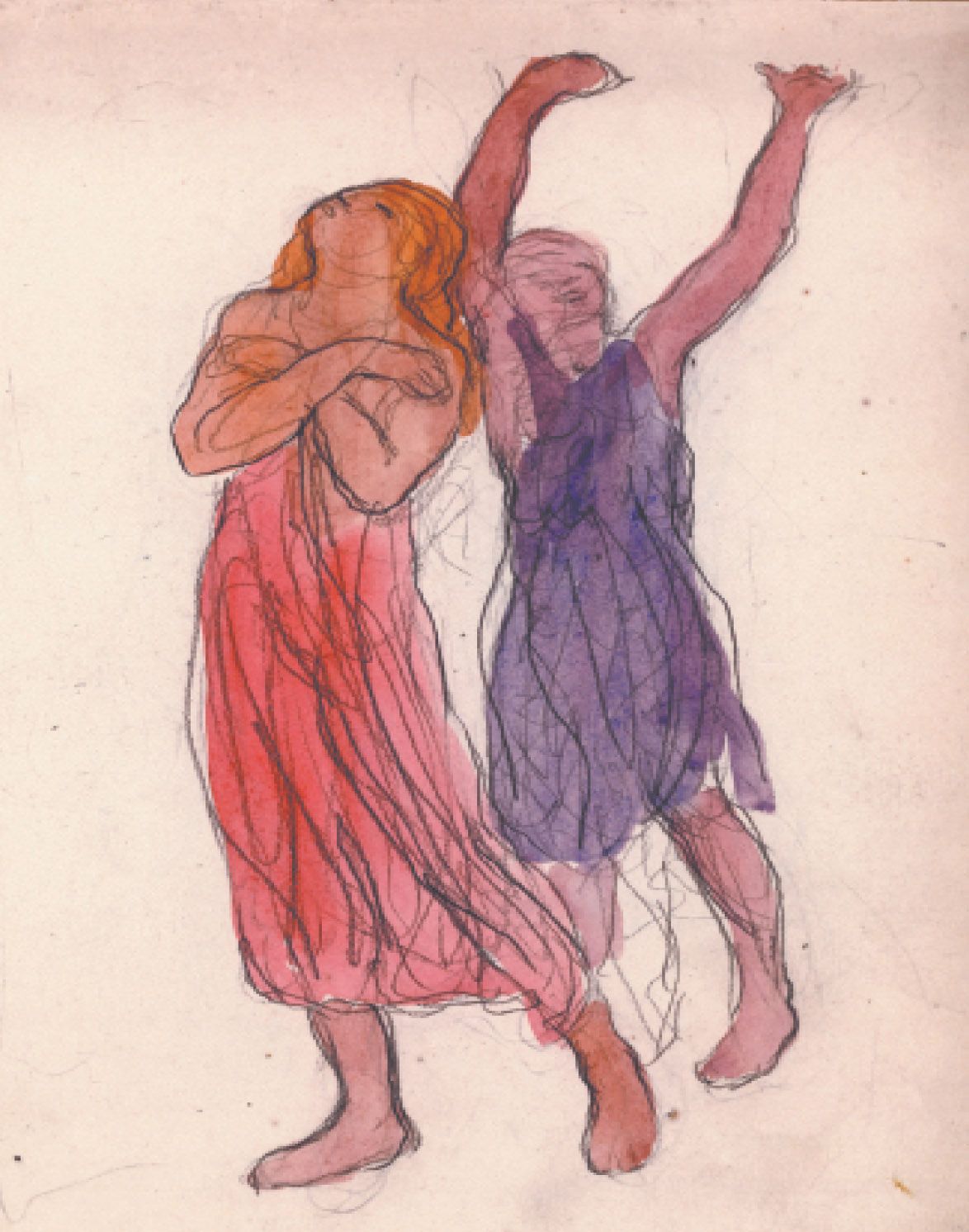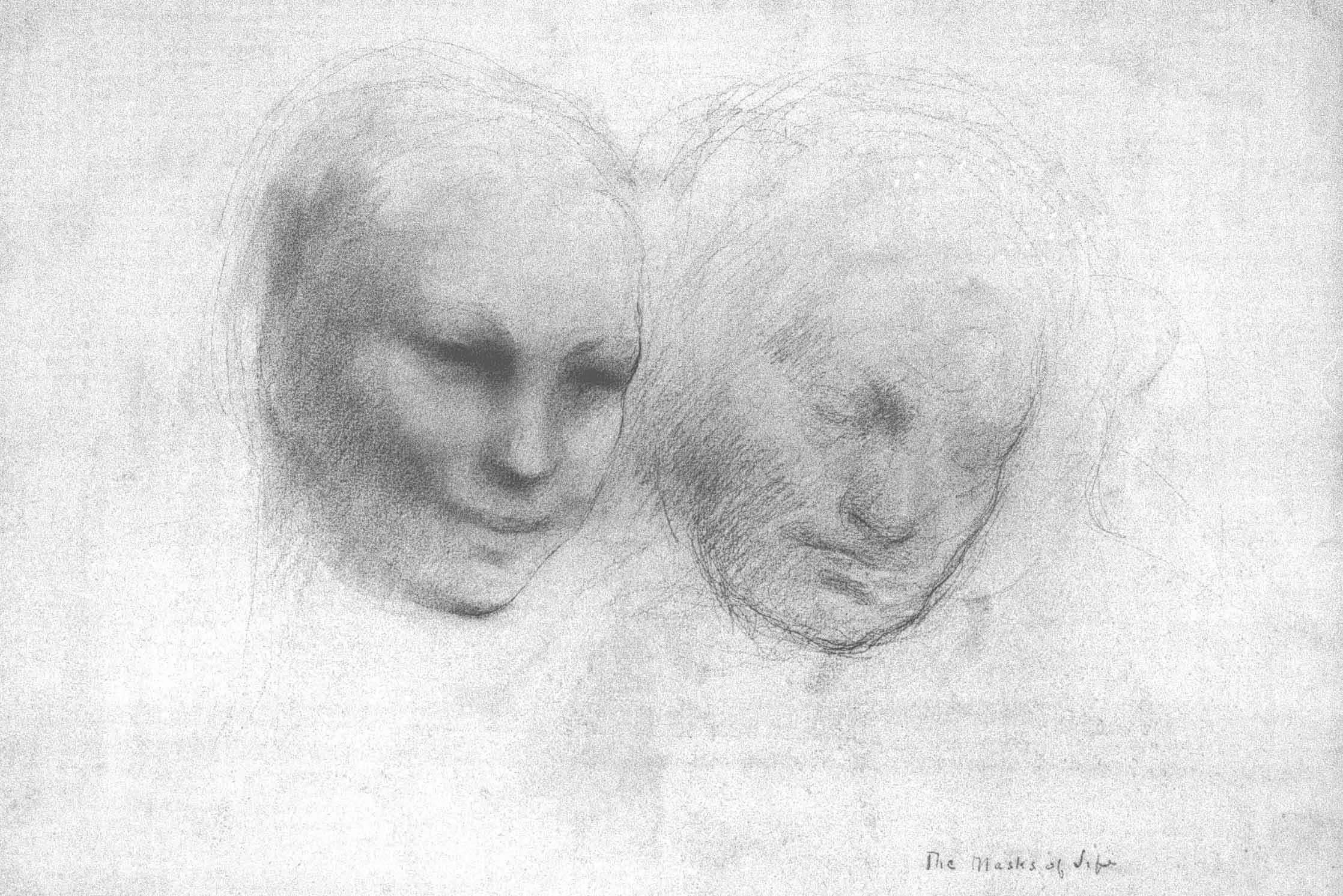The Art of Symbols in Ithraeyat
In search of a symbol for Ithraeyat ‘Nostalgia’ Edition.
Dan Brown, The Da Vinci Code.
I have always been influenced by adventure/treasure hunting and fantasy stories, books and video games, from Dan Brown books like “The Da Vinci Code” to Naughty Dog video games such as the famous “Uncharted” series. I’m always intrigued and passionate about the visual graphic aspect of these stories; the sketches and technical drawings of symbols and hidden unknown objects that require you to pay attention to the details in order to get some sense of them. This urge for the thrill and the enthusiasm for solving problems and puzzles in the form of storytelling are what make history and reality so interesting.
It was once said that the human mind will absorb any piece of information, no matter how complicated it might sound, when it is told as a story. Now imagine layering that with emotions and creative visuals. As human beings, we’re programmed to respond to stories. Ever wondered why one piece of content leaves you cold while another sticks in your head? The right creative story is tapped deep in our minds.
J.K. Rowling
Stories of mythical creatures, treasured lost cities, and royal figures' mysteries have always been my reference when I’m practicing my field of interest, graphic design. Showing the dark, untold side of the story is really interesting. There are a couple of tales that say the famous queen Cleopatra, a powerful female figure, was in fact a witch.
Regardless of whether that is true or false, the idea of visualizing the possibility of that part of history in the form of graphics and visuals is very creative and interesting for people to see. People always tend to say, "Look at the half-full part of the glass," while I say, "Look at what’s written on the other side of the glass."
Freehand rough sketches and technical drawings in a sketchbook have a special charm to them compared to sketches being drawn directly into the digital form. Hand-drawn sketches show a completely different, raw and authentic outcome. The whole essence exists in the imperfections of the lines and the messiness of the pencil shavings. A lot of graphic designers and illustrators nowadays take their sketches straight to digital using iPads and Adobe software, forgetting what it’s like to do freehand drawings. Personally, I like to hand sketch every graphic project that I work on, then I scan and transfer it to digital while I try to preserve the imperfect qualities of the drawing. Somewhere in the process of copying and scanning, these little beautiful details vanish and the outcome somehow loses its human touch. Therefore, I try to edit and continue on completing the piece digitally, mimicking the effect of paper.

Sketches by Dhay Al-Mindeel.
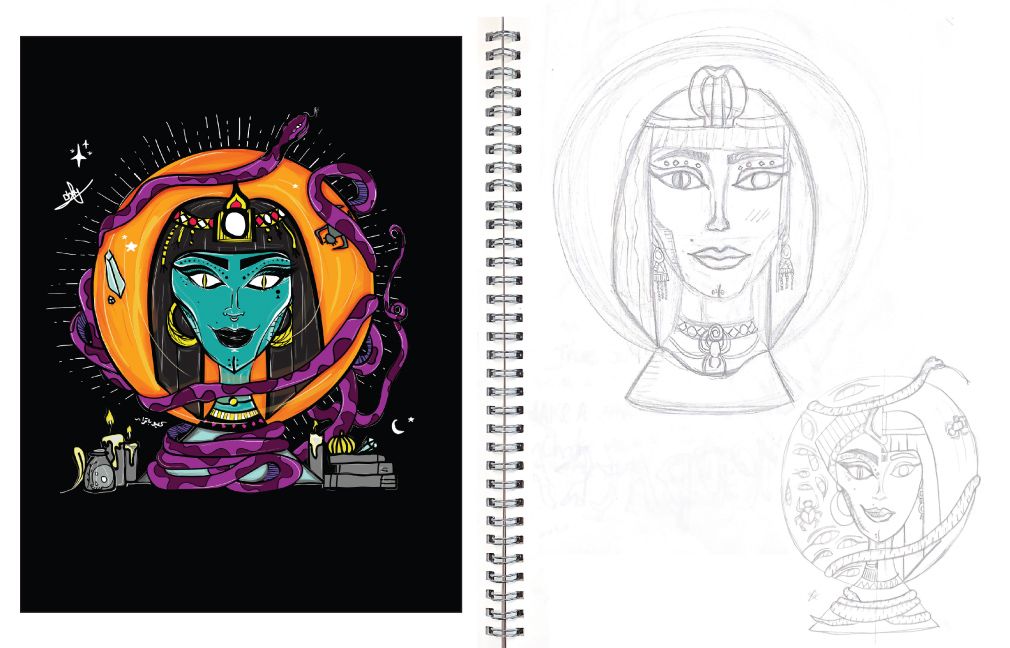
‘Dark side of Cleopatra’ by Dhay Al-Mindeel.
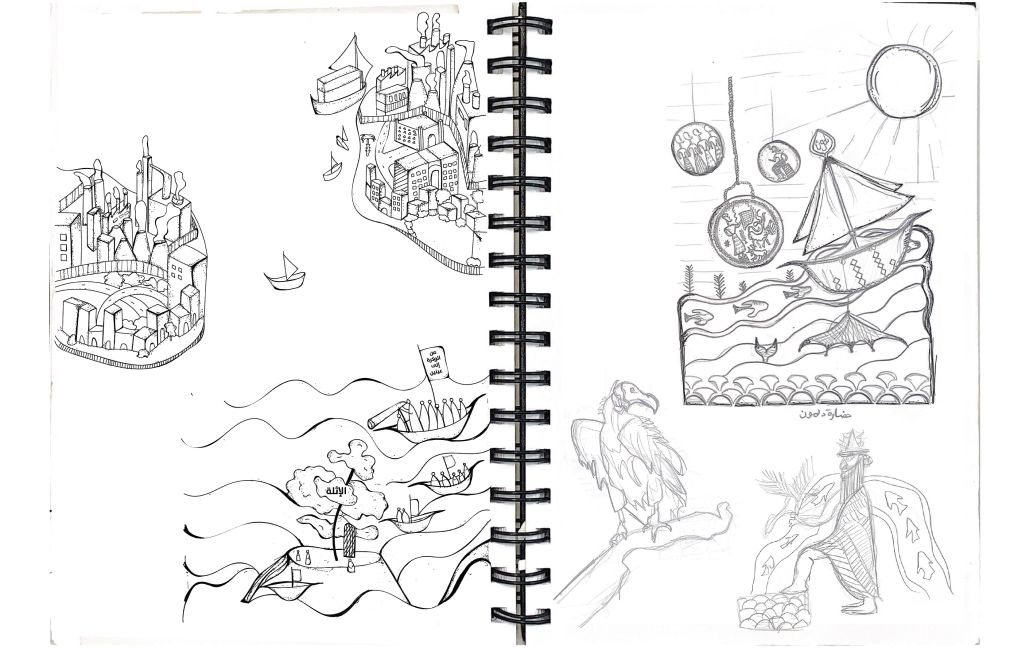
Sketches by Dhay Al-Mindeel.

Sketches by Dhay Al-Mindeel.
To me, creativity is not when you bring something new to the world. Creativity is when you have all of these ingredients placed in front of you and you just know how to mix and pick what’s right for you to produce an outcome that has a different taste, smell, and look to it that’s curated by your own preference and likeness. They say that humans cannot create and think of something that's purely made up in their minds. It's always something that has a reference in our physical world. It's something that God has created for us to take reference from. The next time you watch a fantasy movie or read a comic book, try to analyze the creatures, the places, and buildings they’ve created. Is it a mix of familiar things in our lives? Or is it something that you’ve never seen in your life? The answer is that any new object, creature, or creation in general that was created by the human mind is always a mix of familiar information that exists in our world. Although our minds are limited, there are so many creative, endless possibilities and outcomes.
The story of Ithraeyat’s symbols began when I was working on the magazine’s fifth issue “Legends.” The inspiration came from the cover artwork ‘Al Qatt Al Thamoudi’ by the Saudi artist Ali Al-Sharif. The symbols that the artist extracted from ancient Thamoudi drawings were so inspiring. They were laid out in a perfect box along with its captivating colors. I started analyzing his painting so I could extract certain elements from it that could work as symbols or as a pattern to design the inside pages of the magazine.
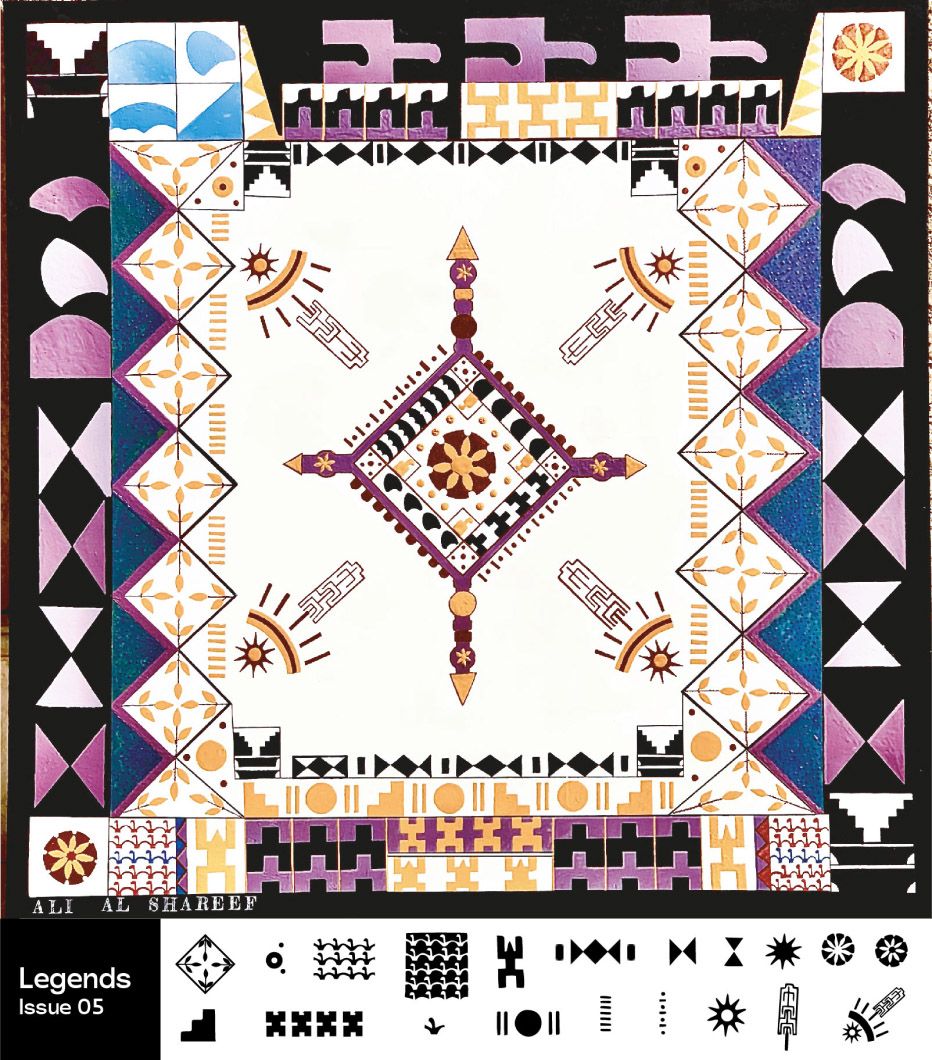
In search of a symbol for Ithraeyat ‘Legends’ Edition.
A month later we published the sixth issue “Nation”— the Saudi National Day special edition. In contrast to the previous issue, however, there were no symbols on the cover artwork that I could extract from. I started looking at old drawings that contain patterns and symbols that define Saudi Arabian culture, especially those that existed in traditional clothing and old buildings, gates and doors. The outcome was a set of symbols and patterns that grace that issue.
Result: No longer was it just the art and words that solely expressed the theme of each issue, but also the very design that glued everything together, from cover and color palette to symbols and pages.
Each design element was hand drawn for the magazine using resources that I could find that relates directly to the issue. After a couple of issues, I decided to distinguish each issue by its main symbol.
I wanted readers to not just read the article, but enjoy the artworks and discover unique elements in the design, making the act of reading a journey of ‘discovery’ for each special Ithraeyat edition.
Hope you look forward to our next symbol and its story.
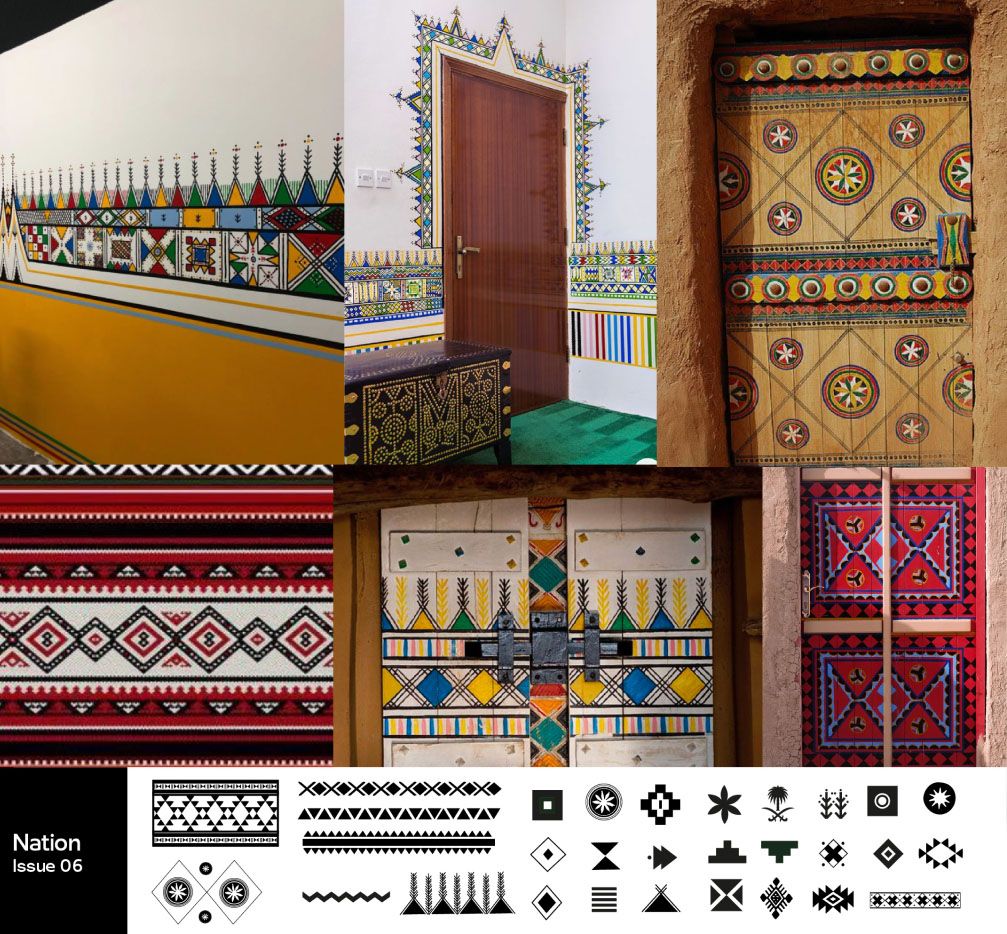
In search of a symbol for Ithraeyat ‘Nation’ Edition.
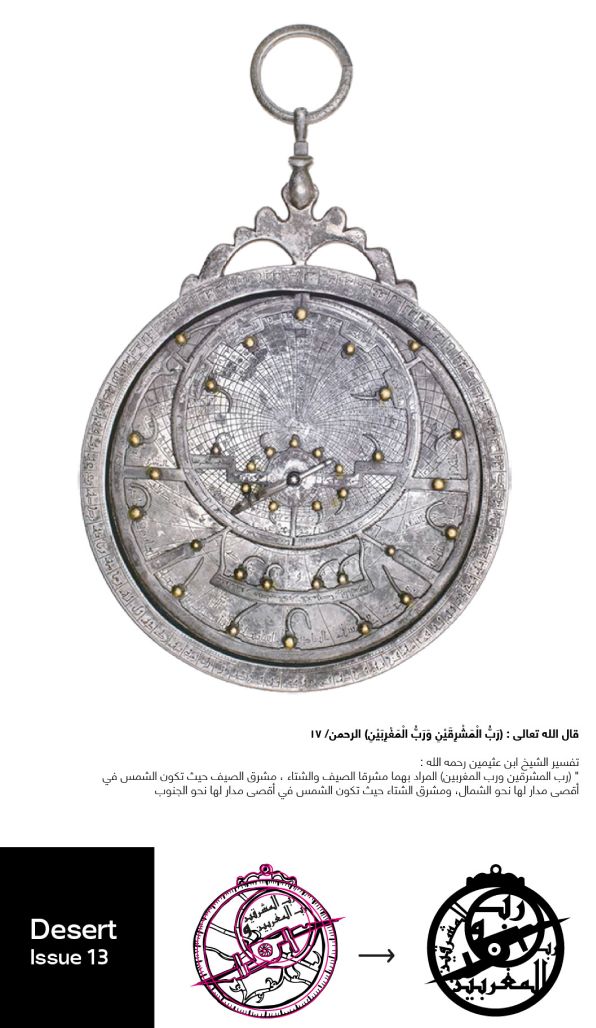
In search of a symbol for Ithraeyat ‘Desert’ Edition.
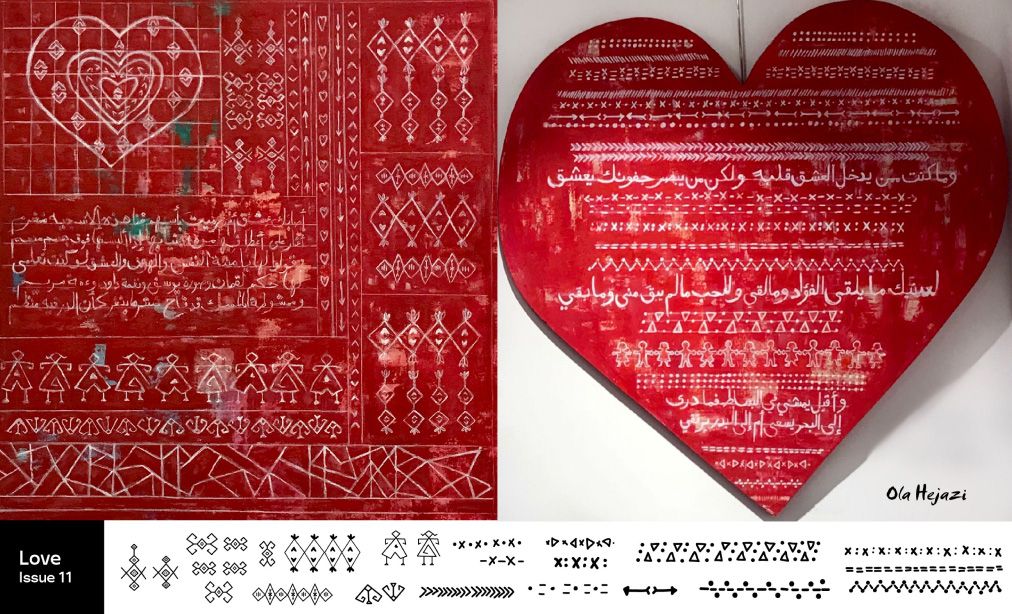
In search of a symbol for Ithraeyat ‘Love’ Edition.
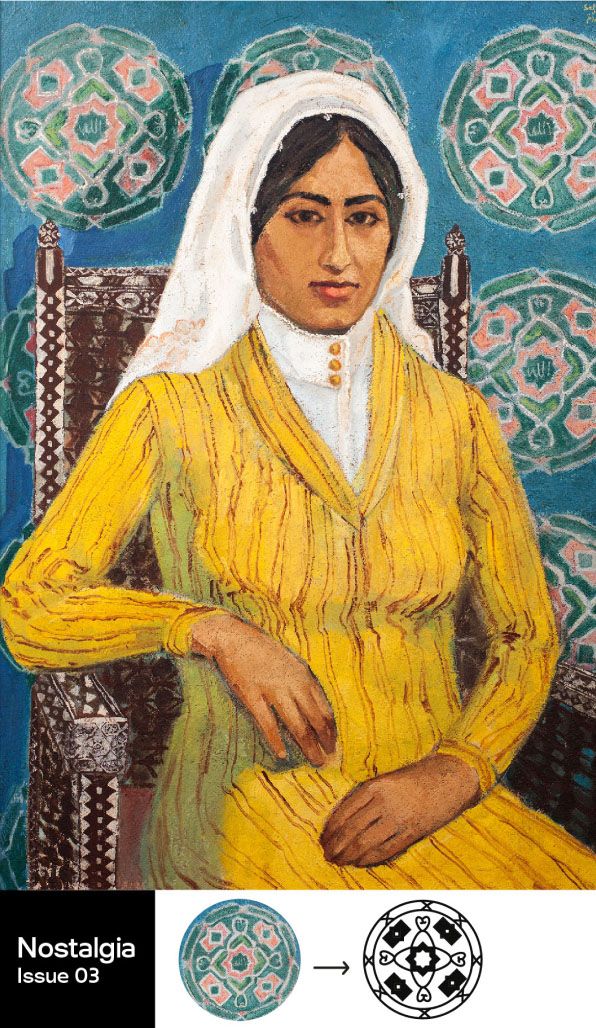
In search of a symbol for Ithraeyat ‘Nostalgia’ Edition.
